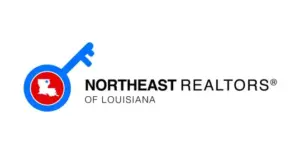Your clients are already online. They’re scrolling through listings at midnight, comparing neighborhoods over breakfast, and researching agents before ever picking up the phone. The National Association of Realtors reports that 43% of buyers start their home search online, while only 21% contact an agent first.
Even more telling?
Every single buyer now uses the internet during their property search, and 51% find the home they ultimately purchase through an online listing.
For millennial buyers, the numbers get even more dramatic. Nearly 99% rely on websites during their home search. If you’re not showing up online with a professional web presence, you might as well be invisible to an entire generation of homebuyers.
Despite these facts, many agents still hold outdated beliefs about real estate websites. These myths cost you money, credibility, and clients. Let’s break down what’s true and what’s holding you back.
Myth 1: My Brokerage Page and Zillow Are Enough
The Reality: You’re basically renting space on someone else’s property.
When prospects can’t find a dedicated website for you, they make assumptions. You’re either too new to have clients, not tech-savvy enough to matter, or simply not serious about your business. None of these impressions helps you win listings.
Think about it this way. Your brokerage’s website lists you alongside every other agent in the office. Third-party portals like Zillow control the branding and the messaging, and most importantly, they control the leads. You’re paying referral fees for contacts that should’ve been yours in the first place.
A personal website gives you three things brokerages and portals can’t:
Brand control. Your values, your neighborhood expertise, your client success stories. One agent struggled to win listings until she built her online presence with testimonials and refined messaging. Her business turned around because clients could finally see what made her different.
Direct lead capture. Integrating IDX property search into your site means visitors become your contacts, not shared leads. You set up the forms, nurture the relationships, and close the deals.
Expert positioning. Blog posts about local market trends, community guides, and school district breakdowns. This content shows you know your territory better than some agents working from a corporate template.
Most agents don’t realize that 88% of consumers trust online reviews as much as personal recommendations. When your website showcases verified testimonials and case studies, you build trust before the first handshake.
Myth 2: If I Build a Website, Clients Will Automatically Find Me
The Reality: Your website without marketing is like a billboard in your basement.
Building a site is step one. Getting people actually to visit it? That’s where most agents fail. Digital marketing experts call this “one of the most dangerous misconceptions” in the industry. They’ve seen countless agents launch beautiful websites that sit empty because nobody knows they exist.
Search engines don’t magically reward you for having a website. Google isn’t sending you traffic because you deserve it. Social media algorithms won’t promote your posts out of charity. Without a clear strategy, your site becomes expensive digital art that nobody sees.
Your website needs four things to succeed:
- Traffic generation: SEO work, targeted ads, email campaigns
- Clear messaging: Visitors should know who you are and why they should care within 10 seconds
- Conversion paths: Every page needs an obvious next step
The NAR data prove the stakes. Half of all buyers found their eventual home online. If you’re not showing up in those searches, you’re losing transactions to agents who are.
Set up Google Analytics. Review your traffic sources monthly. Which keywords bring visitors? Where do they drop off? Which pages convert? Treat your website like you’d treat open house feedback. The data tells you what’s working and what needs fixing.
Myth 3: More Content and Flashy Graphics Make a Better Site
The Reality: Cluttered pages kill conversions faster than any competitor could.
You’ve seen these sites: rotating banners, auto-play videos, pop-ups before you can even read the headline, and social feeds clogging the sidebar. The designer probably thought they were adding value. Instead, they created a digital yard sale that makes visitors hit the back button.
Web design research shows that excessive information overwhelms people. They can’t find your contact form. They can’t locate the property search. They give up and move on to an agent whose site makes sense.
Google’s user experience algorithm actively penalizes sites that frustrate visitors. High bounce rates signal poor quality, and your rankings drop accordingly. AgentFire found that overcrowded homepages with too many pop-ups leave terrible first impressions. Clean design with prominent calls-to-action generates more leads every time.
What do buyers actually want?
According to NAR research, they prioritize photos, pricing, detailed property information, and floor plans. Everything else is noise.
Keep your homepage focused. Use high-quality images strategically, not decoratively. Make sure pages load in under three seconds. Put your contact information where people can actually see it. Think minimal and intentional, not sparse and boring.
Myth 4: SEO Is a One-Time Task I Can Set and Forget
The Reality: SEO maintenance is like lawn care for your digital curb appeal.
Some agents think real estate SEO means stuffing keywords into their homepage once and calling it done. Then they wonder why they’re on page seven of Google while their competitor ranks first for “homes for sale in [your city].”
Search engines update their algorithms constantly. User behavior shifts. New competitors enter your market. If you’re not adapting, you’re falling behind. SEO professionals stress that optimization requires consistent tracking and updates.
Google’s ranking systems reward sites that provide good overall experiences. That means mobile-friendly design, fast load times, secure HTTPS connections, and no annoying interstitials blocking content. There’s no single magic bullet. It’s dozens of factors working together.
Make SEO part of your weekly routine. Update blog posts with fresh market data. Add new neighborhood pages when you expand your farm area. Optimize images with descriptive alt tags. Compress files so pages load faster. Monitor your Core Web Vitals through Google Search Console.
Can’t do this yourself? Hire someone who can. Professional SEO costs nothing compared to the commission you’ll lose by staying invisible online.
Myth 5: Pretty Design Is All That Matters for My Website
The Reality: Beautiful design means nothing if Google can’t find you and visitors can’t use your site.
Your website could look like it belongs in a design magazine: clean typography, stunning property photos, smooth animations. But you’ve built a gorgeous trap if it takes 12 seconds to load on mobile, or search engines can’t index your content correctly.
Technical performance directly affects SEO and conversions. Google needs to crawl your pages, images must load quickly, and the site must work on phones, tablets, and desktops without breaking. When Google detects high bounce rates or sluggish load times, your rankings tank.
The page experience guidelines are clear: sites should deliver fast Core Web Vitals, use HTTPS security, display correctly on mobile devices, and avoid intrusive ads or pop-ups. Check these boxes or watch your traffic disappear.
Balance aesthetics with performance. Use a responsive design that adapts to any screen size. Compress images before uploading. Limit the number of fonts and scripts running on each page. Test everything on actual mobile devices, not just desktop browsers.
Run your site through Google’s PageSpeed Insights or Lighthouse tools. They’ll show you exactly what’s slowing things down and how to fix it. Remember: the most beautiful website in the world is worthless if visitors leave before it finishes loading.
Myth 6: Agent Websites Don’t Generate ROI
The Reality: The numbers tell a different story.
Sure, Zillow generates leads. They also charge referral fees, control your branding, and own the client relationship. Meanwhile, agents who invest in their websites and marketing report returns that make portal fees look like a bad joke.
Real case studies prove the point:
Over eight months, one agent spent roughly $20,000 on website tools and lead generation. She earned $112,310 in gross commission income, a 461% return on investment. Another agent invested $17,800 and pulled in $126,000 GCI, for an over 700% ROI.
A long-term inbound marketing client achieved 2.3x ROI in year one, 10x in year two, and projected 20x ROI in year three. Over 18 months, they spent about $12,000 on their website and SEO, then earned over $36,000.
That’s a 3:1 return that keeps compounding.
Another brokerage’s website redesign improved load speed by 300%, doubled buyer and seller leads, achieved first-page Google rankings for high-intent searches, and cut bounce rates by 40%.
Your website isn’t a cost. It’s a lead-generation engine that works while you sleep. Even one or two extra transactions per year easily covers your site’s maintenance costs. Do three or four deals from your website? Now you’re looking at serious profit.
Myth 7: I Need a Long Homepage Packed with Content for SEO
The Reality: Quality beats quantity, and Google knows the difference.
Some agents create homepages that scroll forever, with wall-to-wall text about their service area, philosophy, awards, team, and process. They think more content equals better rankings. Instead, they’re driving visitors away.
Google’s algorithms reward pages that satisfy user intent. If someone lands on your homepage and immediately bounces because they can’t find what they need, that signals poor quality, and your rankings drop. AgentFire’s research confirms that “quality over quantity” should guide homepage content. Spammy pop-ups and excessive information create terrible first impressions.
Your homepage has one job: get visitors to the next step. That might be searching properties, reading your bio, checking out listings, or contacting you. Every word should move them toward one of those goals.
Provide enough information to establish credibility and direct people deeper into your site. Save the detailed neighborhood guides for dedicated pages. Put your lengthy market analysis in blog posts. Keep the homepage clean, focused, and action-oriented.
Myth 8: Posting Listings on Social Media Is All I Need
The Reality: Social media algorithms are working against you.
The average agent has about 172 Facebook likes. Sounds decent until you realize the algorithm shows your posts to roughly 10% of those followers. That’s 17 people seeing your listing announcement.
Tweets reach about 10% of your contacts for maybe 18 minutes before they disappear into the feed.
Over-posting listings actually makes things worse. People start unfollowing you because their feed becomes a parade of houses they can’t afford or don’t want. Social media works for relationship building and engagement, not property marketing.
Think of it this way: social platforms are rented land. The rules change without warning. Organic reach keeps shrinking. Your posts live and die by an algorithm you can’t control. Your website? That’s property you own.
Social media experts describe it as a “relentless influencer” good for real-time engagement. Your website serves as your “fortress of credibility” and SEO foundation. The smart strategy integrates both.
Post engaging content on social media that links back to your website. Include teaser property tours, quick market updates, and client testimonials. Use paid social ads to target specific demographics. When people click through, they land on your site, where you control the experience and capture the lead.
Your social presence should feed your website, not replace it.
Making Your Website Work
The real estate market runs on digital first impressions. Buyers search online, research agents through web content, and make decisions based on what they find. Myths about websites keep too many agents stuck in patterns that no longer work.
You need your own site, not just a brokerage bio. You need ongoing marketing, not just a launch announcement. You need clean design and strong SEO, not flashy graphics and keyword stuffing. You need technical performance that matches visual appeal. And you need to treat your website as an investment that generates measurable returns.
Set up analytics, review them monthly, update content regularly, and monitor performance metrics. Use your site as the hub for all your marketing, with social media and email driving traffic back to pages you control.
If you do this right, your website will stop being a digital business card and become a 24/7 engine for lead generation and brand authority. Are the agents winning in your market? They figured this out years ago.
Time to catch up.
Table of Contents







